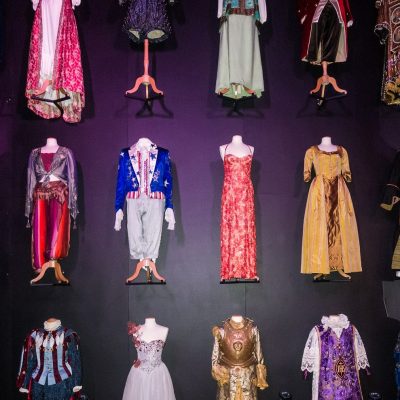Sparks of Vayakel (and Pekudei)
Conversations At Home

The end of sefer Shemot can seem a bit repetitive. As Ramban (Bereisheit 36:8) points out, Hashem began telling us in detail how to create the Mishkan in parshat Terumah. By the time we get to parshat Pekudei the information has been repeated, either in detail or as a general principle, five times. Ramban connects this repetition to another repetition in Bereisheit, when Eliezer repeats the story, in detail, of his journey to find a wife for Yitzchak. There, the Midrash (Bereisheit Rabbah 60:8) tells us that the repetition is a sign of the value that Hashem places on the simple conversation of the servants of the Patriarchs.
Although the two situations at first seem to have little in common, it’s actually not that surprising that we find ourselves, at the end of sefer Shemot, returning to the world of the Avot in Bereisheit. After all, that is what Shemot is all about. As Ramban explains in his introduction to the sefer, Shemot is the book of galut and geulah, of exile and redemption. And although we physically leave Egypt halfway through the book, we only get to the point of true redemption at the end of the book. Real redemption only occurs when we, as a nation, reclaim the spiritual state of our forefathers. The end of Sefer Shemot is a national return to the spiritual level of our forefathers. Our forefathers lived in homes with the Divine Presence hovering over them constantly. As a nation, we replicated this through the Mishkan, and the cloud of glory which covered it.
Building the Mishkan was therefore not just building something new. It also meant returning to our spiritual home, to the home of Avraham and Sara. And that meant returning to our mother-tongue, to the language, and the rhythm of the language as it was spoken when our nation was in its infancy. The Midrash quoted above uses the word “siach” to describe the language of our forefathers. Siach is not a language of learning, or academics. It’s the language of simple conversation and natural, unaffected speech. It’s the dialogue of life. It’s repetitive because that’s how we live. Rav Kook (Orot 66-67) points out that its value lies in the way it is an expression and description of how the Avot lived. Their ideals permeated their day-to-day living and found expression even in the discourse of their servants.
This ability, to be uplifted and to speak naturally at the same time is an expression of what our world was created to embody. The Torah begins, “In the beginning G-d created Heaven and Earth,” the two of them, together. Aretz, earth, which is connected to the root ratz, to run, and the word ratzon, desire or will, is our place for running after and pursuing all that we desire. It was brought into existence together with the Shamayim, from the root sham, there, the place of our destination. The first words of the Torah reveal the nature of our world. It is a system of striving and acquiring, a place created for self-actualization.
It is also a place that is built for man, and reflects man in all its aspects, because all is meant to work together. In Avraham Avinu’s world, and in his home, this was self-evident. In the sefer of secrets that he left us, Sefer HaYetzirah, we learn that all of existence can be divided into three aspects: World, Year and Soul. They are all reflective of each other, and of our inner essence as man. What we call World is all that exists in space, and it encompasses everything in our physical world, and in all the heavens. In this space, our Creator established one place where His Presence dwells, the Mishkan and then the Beit HaMikdash, and its structure reflects the structure of man. The courtyard, where animals are slaughtered, is the place that relates to our animal soul, our nefesh. In the heichal, the menorah, the shulchan and the ketoret, relate to our higher faculties, to our mind and our emotions, and to our ruach. The kadosh hakedoshim is parallel to the higher level of our soul, our neshama. Time also reflects the structure of man. It spans from the very beginning, which is called reishit, head, and has progressed to our time, ikvisa d’meshicha, which literally means the heels of Moshiach. The refined image of humanity, the nefesh of the world, is seen when we can express our tzelem elokim, our true image, in time and space.
We built the Mishkan, the Ohel Moed, the tent of destination, as the place where we celebrated our moadim, our days of destination. It was the nexus between space, time and human. And as such, it was a return to the home of our forefathers and foremothers, who were the perfect expression of the refined image of humanity. Their simple conversation was a natural expression of what humanity was meant to become.
We were commanded to build the Mishkan, and we fulfilled that command with joy. But there was an additional aspect to that building, even more than just actualizing Hashem’s plan. We didn’t just receive a command, we lived it, and carried it out perfectly (see Shemot 39:42). This was an echo of our Avot, who were the Divine Chariot. Every essence of their being was as Hashem commanded. We too, on a national level, lived the mitzvah with all our being. We reflected this aspect of “the conversation of our forefathers’ home,” the aspect of actualization of self. Ramban is telling us that this is what is hinted to through all the repetition at the end of sefer Shemot.
This level is the level of constant conversation with Hashem. Beyond just fulfilling a command, or even fulfilling a command joyfully, this is the concept of living in spiritual reality. It is the recognition that our world was created for a purpose, and that purpose is self-actualization and connection to Hashem. This is not something that needs to be commanded. Actualizing ourselves spiritually is a necessary part of being, like breathing. We breathe not because we are commanded, but because we want to live. And we actualize ourselves and connect our selves to Hashem, because that is the essence of what it means to be truly alive.
We no longer have the Mishkan or the Beit HaMikdash, but we still maintain this aspect of “the conversation of our fathers.” It exists in the tefillot that they established for us. When Yitzchak established Mincha, for eternity, the pasuk (Bereisheit 24:63) uses the language of siach. The level of “the conversation of our fathers” stays with us through our tefillot. Whenever we daven we have the ability to return home, to our roots.



